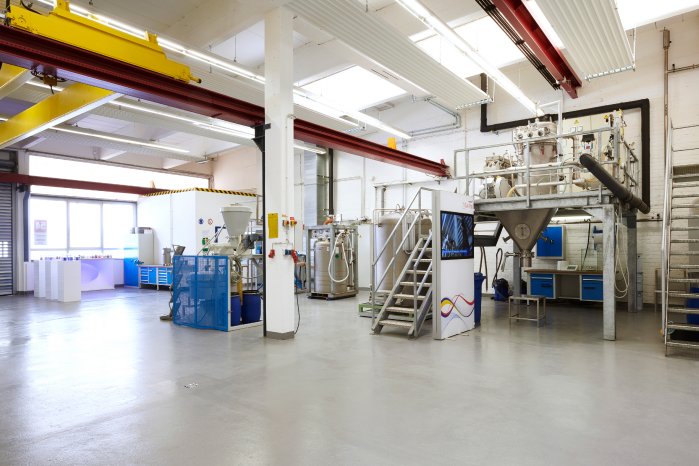“Cold grinding involves cooling and embrittling substances with cryogenic liquid nitrogen or carbon dioxide. This process allows particularly fine grain sizes and a high material throughput to be achieved. In addition, nitrogen and carbon dioxide create an inert atmosphere by displacing oxygen, thus providing a high level of protection against dust explosions,” Oliver Dietrich, a cold grinding expert at Messer, explains. It is difficult to separate composite materials using conventional grinding techniques. By contrast, cryogenic grinding technology facilitates efficient and environmentally friendly separation of such materials into their individual components. When grinding spices, the high temperatures generated during the grinding process may result in a loss of aroma and flavour. In the case of heat-sensitive materials, increases in temperature can be prevented by cooling the grinding process with cryogenic gases.
Messer’s cold grinding and recycling testing facility
Messer operates a highly specialised testing facility in Krefeld, Germany. The whole facility serves as a reference as it is designed along the lines of a production facility. The results obtained here are also of particular interest for the very reason that they can be applied to large-scale production. Besides simply producing grinding samples, the facility also makes it possible to estimate actual production costs and perform comparisons with other grinding processes. It is also possible to optimise existing customer mills. Messer can supply the granulate coolers, nitrogen control valves and temperature control system required for on-site testing of these mills at customer sites.

